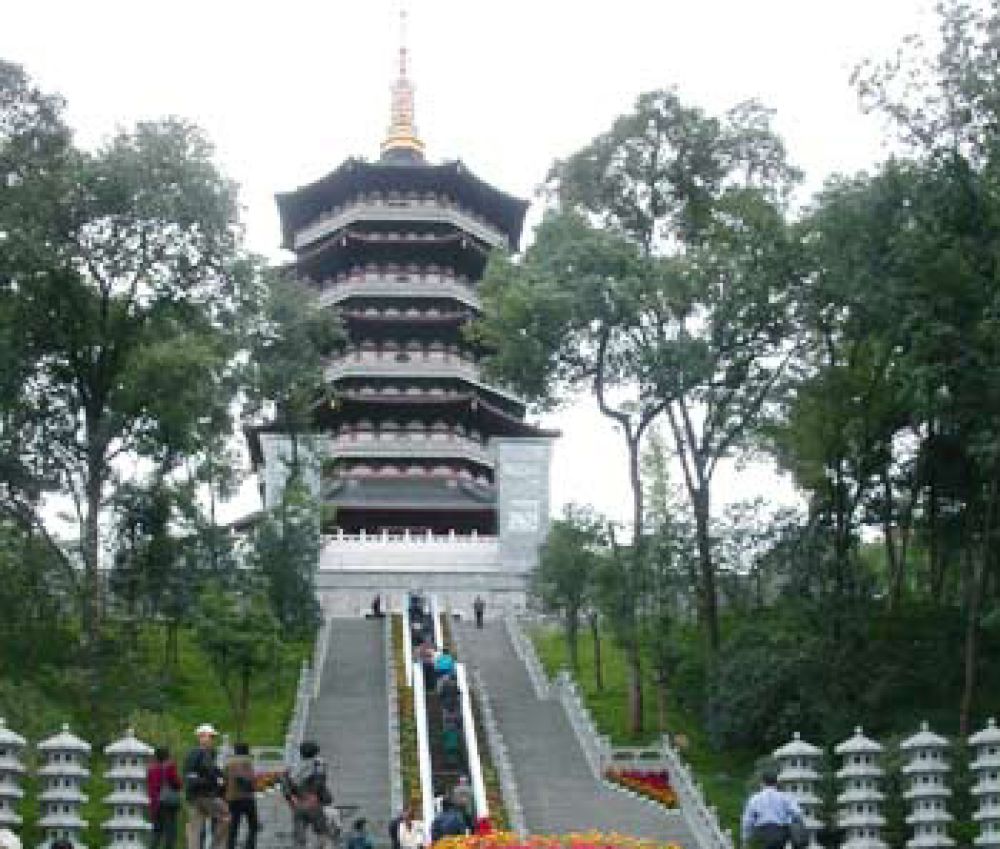

The Leifeng Pagoda is a significant cultural landmark located in the scenic city of Hangzhou, Southeastern China. Its history as a tourist attraction is as rich as its cultural heritage. Originally constructed in 975 AD during the Five Dynasties and Ten Kingdoms period, the pagoda stood on the south bank of the famous West Lake and was part of the Jingci Temple. It was built by King Qian Chu to celebrate the birth of a son.
Historical Significance
The pagoda's structure was made of wood and bricks and became a prominent feature of Hangzhou's skyline. According to legend, the pagoda was built on a site that was inhabited by a white snake spirit, Bai Suzhen, which later became part of Chinese folklore and inspired the popular tale "The Legend of White Snake." Through centuries, Leifeng Pagoda was not just a religious site but also a beacon for stories and myths that attracted a growing number of visitors.
Over the centuries, Leifeng Pagoda underwent numerous renovations but succumbed to damage and neglect, eventually collapsing in 1924. The ruins of the original pagoda became a tourist curiosity, but it wasn't until 2002 that the pagoda was rebuilt and opened to the public as a tourist attraction. This new steel-and-concrete structure incorporated elements from the Song Dynasty pagoda and modern facilities such as elevators, enabling it to regain its past glory while providing better access to visitors.
Modern Appeal and Tourism Trends
In the current day, Leifeng Pagoda is a hotspot for both domestic and international tourists. Its location next to West Lake offers stunning views and a serene atmosphere, which is highly sought after in China's rapidly urbanizing landscape. The top of the pagoda gives a panoramic view of West Lake and Hangzhou, making it a favorite spot for photographers and sightseers. As a result, the area surrounding Leifeng Pagoda has seen increased development with various amenities like hotels, cafes, and shops to cater to the needs of tourists.
The integration of modern technology with ancient culture is a trending phenomenon in Chinese tourism, and Leifeng Pagoda is no exception. With the adoption of augmented reality (AR) and virtual reality (VR), visitors can now enjoy immersive experiences that bring ancient legends to life, enhancing their understanding of the cultural significance of the sites they visit. Furthermore, China's tourism industry has been promoting smart tourism, which focuses on providing personalized services and digital convenience, and attractions like Leifeng Pagoda are at the forefront of this movement.
Sustainable tourism has also become a significant trend, with Hangzhou city making efforts to preserve the natural beauty of West Lake while accommodating increasing tourist numbers. Strategies such as limiting the daily number of visitors to popular sites, including Leifeng Pagoda, and promoting off-peak tourism are some measures taken to ensure the longevity and sustainability of tourism in the region.
Conclusion
The storied Leifeng Pagoda remains an iconic symbol of Hangzhou's cultural landscape. The combination of its mystical origins, historical architecture, and picturesque setting continues to enchant tourists from around the world. As tourism trends evolve, Leifeng Pagoda adapts, providing visitors with a seamless blend of ancient heritage and cutting-edge tourism experiences.